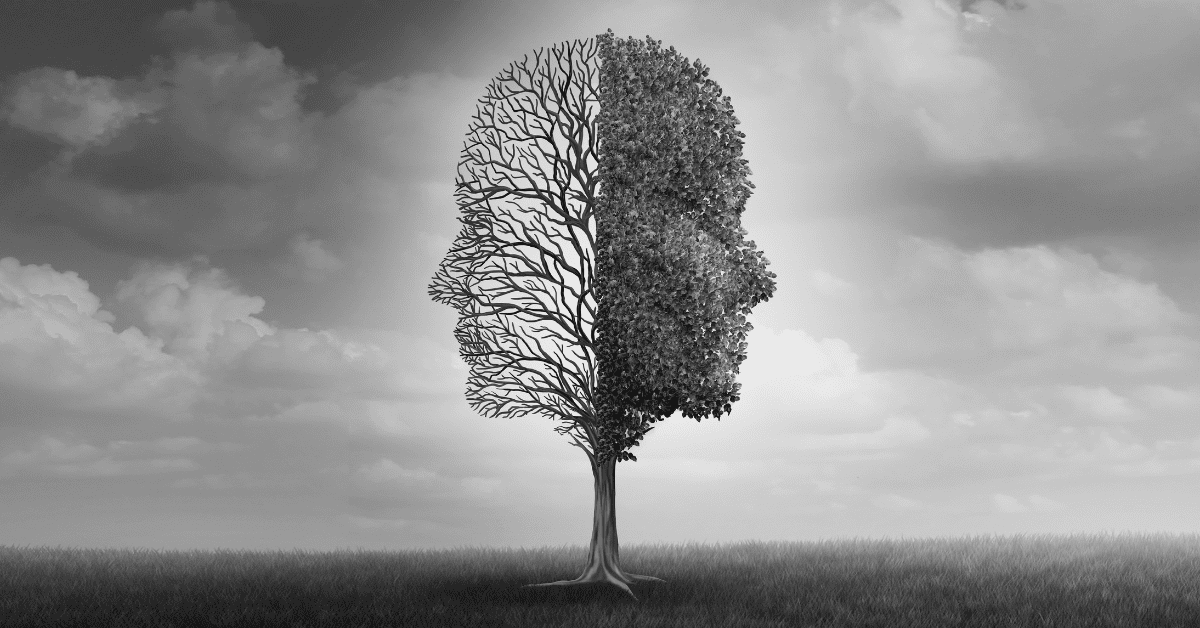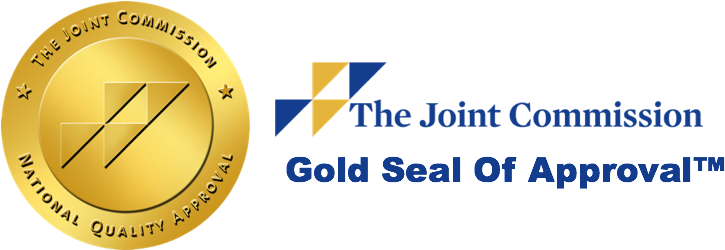It is not uncommon to confuse bipolar and borderline personality disorder (BPD) as the disorders can present themselves in similar ways, such as experiencing extreme highs and extreme lows. However, bipolar is a mood disorder in which an individual experiences mania and depression, whereas BPD is a personality disorder that is typically triggered by relationships and feelings of abandonment.
While undergoing mood changes in stressful times is normal, individuals with bipolar or borderline personality disorder experience extreme and variable mood swings. Understanding the difference between bipolar and borderline personality disorder can be helpful if you or a loved one is exhibiting behaviors that are a cause for concern.
According to the National Institute of Mental Health, approximately 1.4% of the United States adult population has borderline personality disorder, and approximately 4.4% of the United States adult population will experience bipolar disorder at some point in their lives. By understanding the differences in prognosis for yourself or a loved one experiencing one of these disorders, you are better equipped to find the proper care.
Symptoms
Identifying the symptoms and characteristics of one’s behavior is a good place to start when looking for a diagnosis. BPD can look like bipolar disorder since some symptoms share commonalities, such as reckless behaviors, suicidal thoughts, and varying moods. But these symptoms typically differ regarding the periods they are experienced and the behavioral triggers. To understand the nuances between these disorders, consider the table below.

Mood Disorder vs. Personality Disorder
Borderline personality disorder and bipolar disorder are entirely different types of disorders. Bipolar disorder is a mood disorder, and BPD is a personality disorder.
Mood disorders, also referred to as affective disorders, have to do with fluctuations between extreme happiness and sadness, losing interest in things that once brought joy, and persistent feelings of sadness.
Personality disorders have to do more with one’s way of thinking, behaving, and interacting with others and the world. 9.1% of the US population has a personality disorder. People with borderline personality disorder can be triggered by any event– typically related to abandonment– and can experience extreme highs and lows within a single day.
What is Borderline Personality Disorder?
Borderline personality disorder is a personality disorder in which one has long-term patterns of extreme and turbulent emotions. People with BPD typically lack self-confidence and emotional regulation. They often categorize things to the extremes, such as completely good or completely bad, and while they go to extremes, their views on things and people can change quickly. This type of behavior typically results in chaotic and unstable relationships.
People with BPD are more likely to self-harm and experience suicidal thoughts and behaviors. If you or a loved one is exhibiting self-harm or suicidal tendencies, please reach out for help immediately.
Borderline personality disorder often co-occurs with other mental disorders such as post-traumatic stress disorder (PTSD), depression, anxiety, eating disorders, or substance abuse. Co-occurring disorders can make the diagnosis and treatment process more difficult as symptoms from other mental illnesses can overlap with the symptoms of BPD.
How Does Borderline Personality Disorder Impact Relationships?
Often people with borderline personality disorder have unstable and intense relationships. These relationships can be chaotic and quickly shift from intense neediness and desperation to anger and avoidance if the individual feels rejected by the other person. Overall, people with borderline personality disorder typically have insecure attachments and have a hard time accurately reading the other person’s emotions and demeanor, resulting in feeling abandoned or insecure even if the other person is displaying neutral or positive emotions. Occupational relationships can also be affected, resulting in a turbulent career.
What Causes BPD?
The exact cause of borderline personality disorder is unknown, but some research suggests links to:
- Genetics and social environments
- Childhood abuse and trauma such as sexual, physical, and emotional abuse.
- Real or perceived fear of abandonment in childhood or teenage years.
These factors can lead to differences in the brain and its development in areas related to emotional control.
Borderline Personality Disorder Treatment
In the past, BPD treatments were ineffective, but newer evidence-based treatments have proven effective in helping many people experience fewer symptoms and reduce the severity of symptoms. It is crucial to get treatment from a licensed mental health professional. People with borderline personality disorder must understand that treatment and managing symptoms are a gradual process. Their loved ones should also be understanding and patient as they begin treatments.
Treatment options commonly include specific types of psychotherapy (talk therapy) and sometimes medication. The forms of psychotherapy commonly used to treat BPD include:
- Dialectical Behavior Therapy (DBT): This treatment method was created for people with BPD. DBT involves mindfulness, awareness of the present situation, and awareness of one’s emotional state. It helps people develop skills for controlling intense emotions, reducing risky/destructive behavior, and improving relationships.
- Cognitive Behavioral Therapy (CBT): A treatment that can help one recognize and change inaccurate core beliefs of oneself that lead to problems interacting with others. It can reduce mood swings, anxieties, and other behaviors leading to self-harm or suicide.
Medication is less commonly used in treating borderline personality disorder, but psychiatrists may recommend prescriptions to treat other symptoms and mental illnesses present in the patient. If someone is suffering from a severe case of borderline personality disorder, in-patient care can be a helpful tool in managing the disorder and keeping the patient safe.
At The Phoenix Recovery Center, we understand the negative effects the symptoms of BPD can have on one’s life and offer treatments to help manage and decrease the symptoms of BPD so that individuals can lead a happy, fulfilling life.
What is Bipolar Disorder?
Bipolar disorder is a mood disorder that entails extreme mood swings. Individuals with bipolar disorder experience manic episodes in which they may feel elated, energized, or irritable. They also experience depressive episodes, which include sadness, hopelessness, and low energy levels. It is possible to experience manic and depressive symptoms simultaneously, which is called a mixed episode. People with bipolar disorder can also have periods of stable moods.
There are three primary types of bipolar disorder:
- Bipolar I disorder is characterized by manic episodes lasting 7+ days or symptoms that are severe and require immediate hospitalization. Depressive episodes typically last 2+ weeks and are commonly experienced. Individuals with bipolar I can also have mixed episodes.
- Bipolar II disorder is characterized by depressive episodes, though instead of severe manic episodes, people experience hypomania. Hypomania is less intense than full manic episodes.
- Cyclothymic disorder, also called cyclothymia, includes hypomanic and depressive episode symptoms. These symptoms and experiences are not as intense as hypomanic or depressive states and are typically experienced in shorter periods. These symptoms last for at least two years in adults and at least one year in adolescence and children.
What Causes Bipolar Disorder?
The exact cause of bipolar disorder is unknown, but factors such as genetics, brain structure, and one’s environment seem to influence one’s likelihood of developing bipolar.
- If you have a close relative with bipolar, you are at a higher risk of developing the disorder than those without it.
- Stressful events and childhood trauma may also increase one’s likelihood of developing bipolar disorder.
Bipolar disorder treatment
Bipolar disorder has various treatment options that can help many people, including those suffering from severe bipolar disorder. The two main treatment options include taking medications, going to psychotherapy (talk therapy), or both.
- Finding the proper medication can help regulate the symptoms of bipolar. Work with your provider to find the right prescription(s) for you. Finding the correct medication may take some time, and the process requires diligently and regularly taking the medication as prescribed. Let your doctor know if you are experiencing any side effects immediately.
- Attending psychotherapy (talk therapy) can be a great tool as it will allow you to talk about your emotions and recognize any harmful behaviors and thoughts in a professional, non-judgmental space. Psychotherapists can offer healthy coping skills and educate you or your family members in practical and beneficial ways.
- Alternative treatments may include
- Electroconvulsive therapy (ECT) is a brain stimulation procedure known to relieve symptoms. ECT is typically used in cases of severe bipolar if someone has tried other treatment options and has not made progress.
- Maintaining a healthy lifestyle can help relieve symptoms of anxiety, depression, and sleep issues. A healthy lifestyle includes a nutritious diet and regular aerobic exercise.
- Working with a provider to make a life chart to track moods, symptoms, sleep patterns, and life events can help you keep track of your day-to-day experiences.
Differences in The Diagnosis Process
Borderline personality disorder and bipolar disorder are separate mental health conditions that need to be treated as such. Therefore, it is vital to get the proper diagnosis to get the correct care.
Bipolar Disorder
Bipolar disorder needs to be diagnosed by a healthcare provider. They may conduct a physical exam and ask questions to get an idea of your medical history by asking about your symptoms, life history, and family history. Other medical tests may be run to rule out other possible conditions, and you may be referred to a mental health specialist for a mental health evaluation. However, your provider may also conduct one themselves.
Borderline Personality Disorder
BPD can be diagnosed by a licensed mental health professional, such as a psychiatrist, psychologist, or clinical social worker, who has experience in diagnosing and helping treat those with mental disorders. The diagnosis is done through in-depth interviews and discussing symptoms. A thorough medical exam can help rule out any other underlying causes for the symptoms experienced. In addition, providers may likely ask about your family history and life history to understand your and your family’s history with mental illness. BPD is typically diagnosed in early adulthood or the later years of adolescence.
What is the Difference Between Bipolar and Borderline Personality Disorder?
The difference between bipolar and borderline personality disorder is what causes the shift in mood swings and the length of time they are experienced. With bipolar disorders, mood swings occur during an episode and are more random- these episodes can last for extended periods. With borderline personality disorder, symptoms can be triggered at any time, and these individuals tend to cycle through extreme mood swings faster.
Seeking Treatment
Seeking treatment is a vital part of managing both bipolar and borderline personality disorder, and if these disorders go untreated, there can be serious consequences. Whether you have already been experiencing these symptoms or have been struggling with your mental health in general, The Phoenix Recovery Center is here to help you.
The Phoenix Recovery Center can help you receive a diagnosis and has in-patient and out-patient care options that can connect you with medical and mental health professionals faster than a regular provider. You deserve to lead a happy, fulfilling life. To get started, call The Phoenix Recovery Center at (801) 438-3185.







